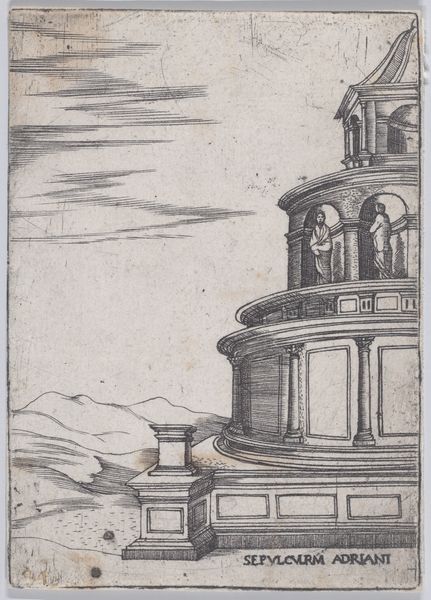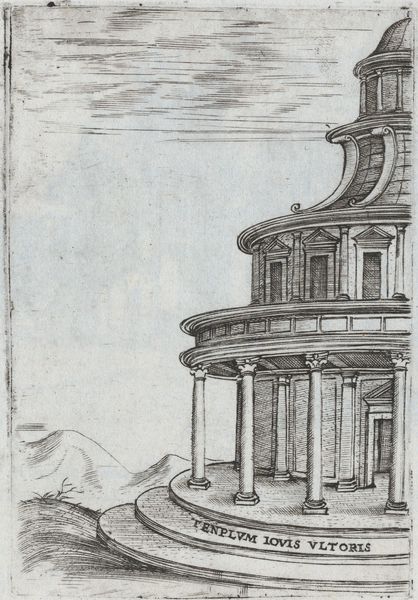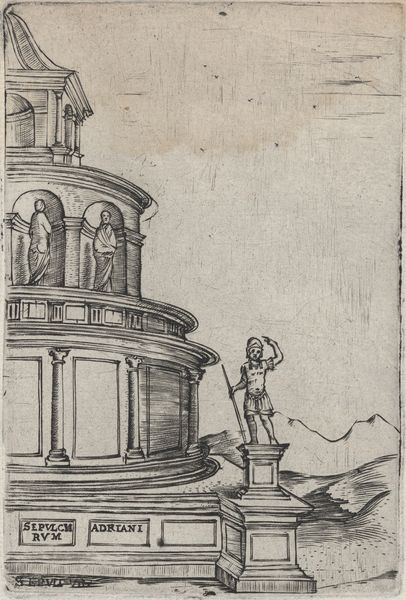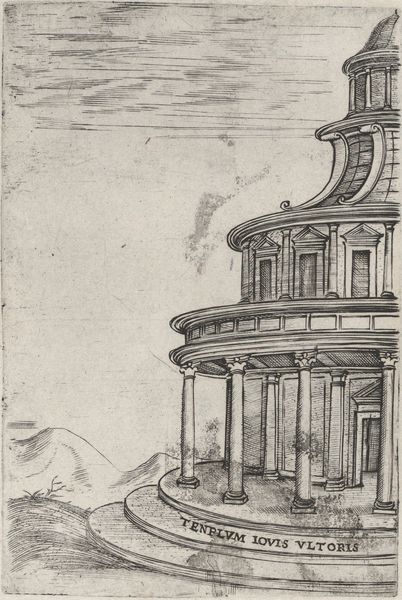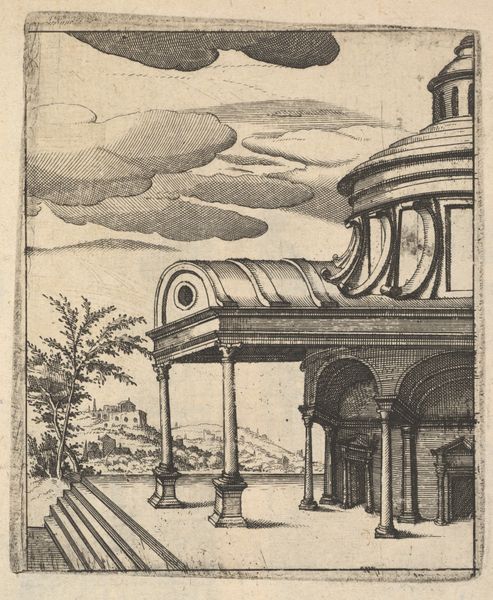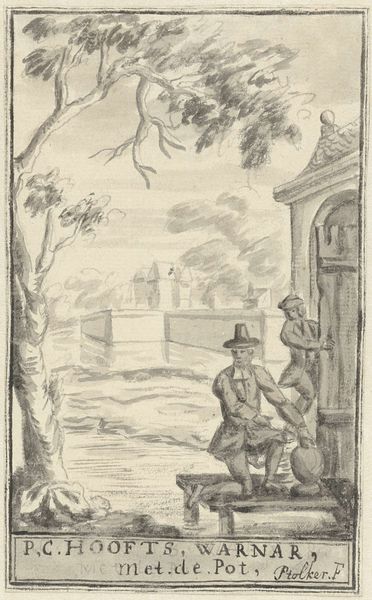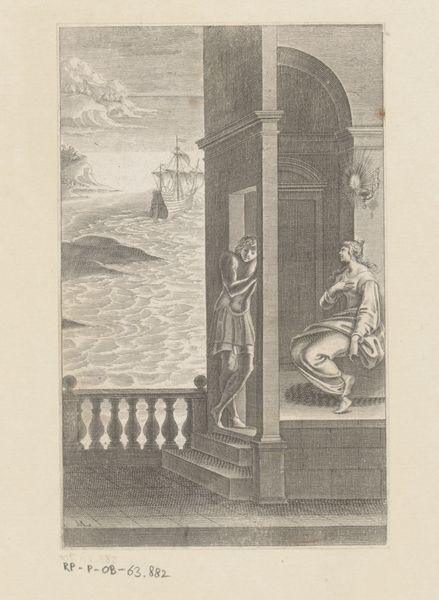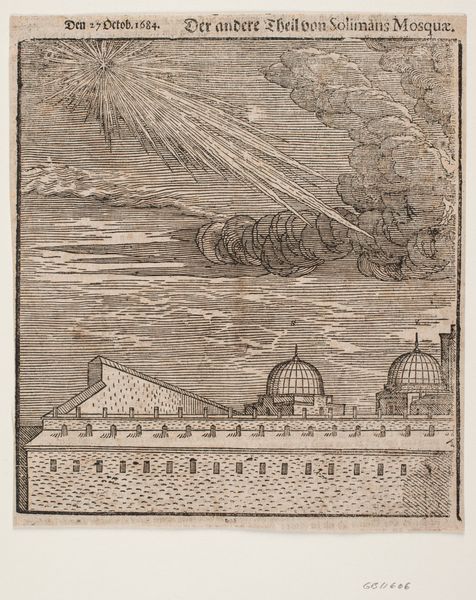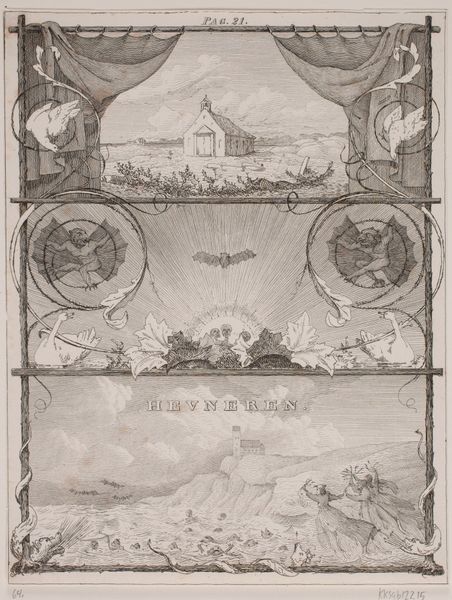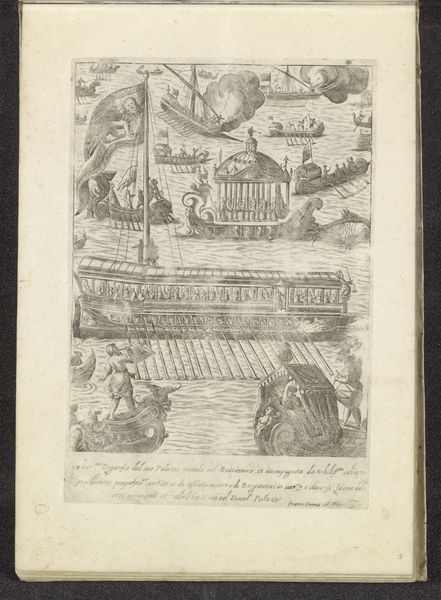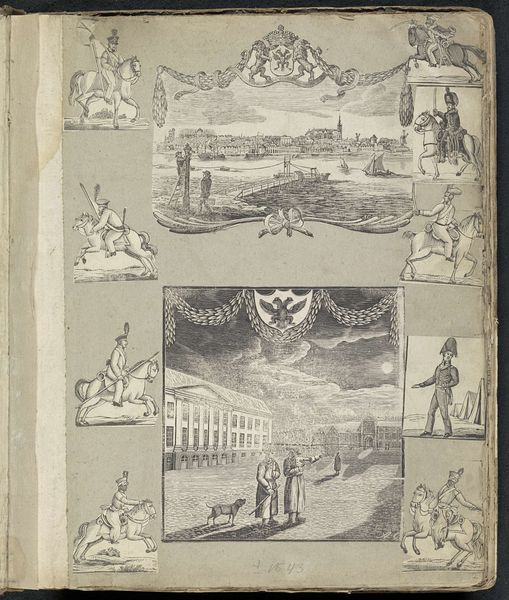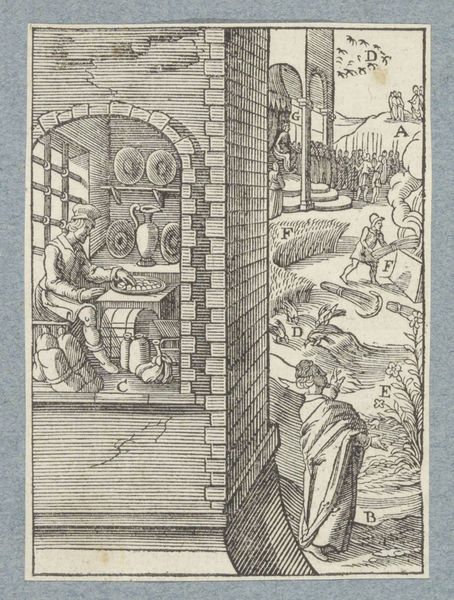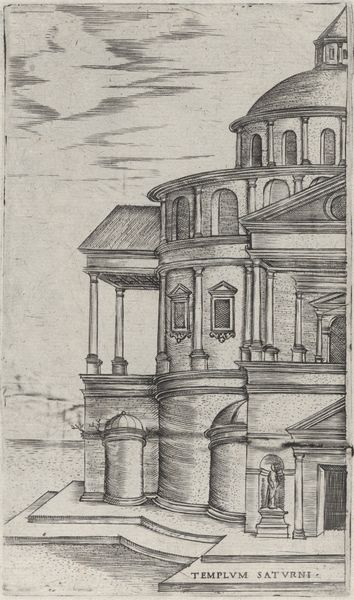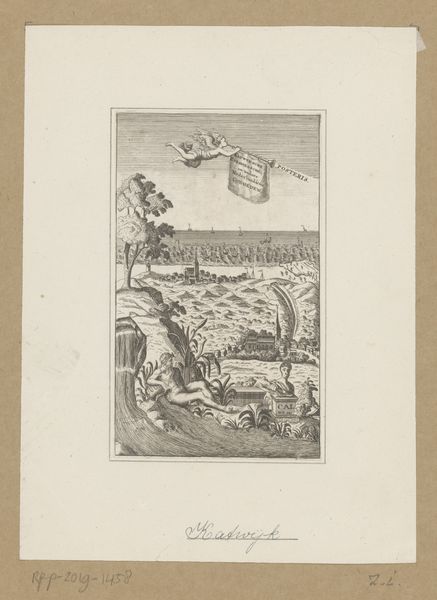
Templum Iovis Ultoris (Views of Ancient Roman Temples and Arches) 1535 - 1540
0:00
0:00
drawing, tempera, print, etching, engraving, architecture
#
drawing
#
tempera
# print
#
etching
#
landscape
#
geometric
#
history-painting
#
italian-renaissance
#
engraving
#
architecture
Dimensions: Sheet: 5 9/16 in. × 4 in. (14.2 × 10.2 cm)
Copyright: Public Domain
Editor: So, this print is called "Templum Iovis Ultoris (Views of Ancient Roman Temples and Arches)," made sometime between 1535 and 1540 by an anonymous artist. It's created with etching, engraving, and tempera. I'm struck by how this technique, designed to replicate classical architecture, must have played a vital role in circulating visual knowledge at the time. What can you tell me about that? Curator: Exactly! Let's think about the materials used: the metal plate, the acid for etching, the ink, the paper. Each is a commodity, sourced and processed by laborers. The printing press, itself a technology of mass production, transforms the unique architectural experience into a reproducible image for consumption. Who had access to these images, and what kind of social or economic standing did that reflect? Editor: That’s interesting, I never considered it that way. It’s like the print itself becomes a tool for creating and maintaining a certain kind of power. Curator: Precisely. Think about the act of "reproducing" the temple. Is it a faithful record? Or does it actively shape how its audience should see the glory of ancient Rome, potentially with ideological intentions linked to contemporary society? Who owned the means of representing and distributing this vision? Editor: It feels less like objective documentation and more like a carefully constructed narrative. So it seems fair to suggest that this print could almost be considered propaganda, influencing perceptions of Roman power and, by extension, promoting similar claims for Renaissance society through access to its vision. Curator: Well said! And where would those perceptions originate? They certainly depend on the social status of whoever produces, disseminates and eventually consumes this piece. Ultimately, this work is more than just a rendering. Editor: I guess by analyzing it, we are unveiling the hidden relationships between labor, technology, and social control within it! Thanks, this really changed my perspective on understanding such historical artworks.
Comments
No comments
Be the first to comment and join the conversation on the ultimate creative platform.
